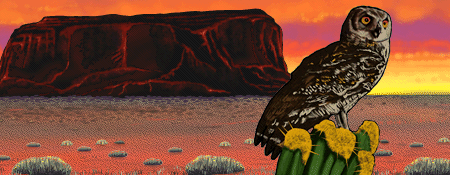
Deserts |


Grade Level:
2
Objectives:
The students will be
able to identify what defines a desert habitat and the types of plants and
animals found there.
Materials: Desert poster, assorted art supplies (tissue, construction
paper, tag board, tempera paint, pipe cleaners, etc), glue, scissors and butcher
paper for mural.
Procedure:
Review
with the students the definition of a habitat and what the characteristics of a
forest are.
Tell them that just
like there are things that constitute a rainforest, there are things that constitute
a desert.
Explain that although it
is thought to be a barren place, there are many living things in the desert.
Refer to the poster and show the students all of the different types of
living things found in the desert.
Discuss
what constitutes a desert- a hot, dry area of land with few or no plants growing
on it. It receive less than 10 cm of
rainfall per year.
Ask
students to give examples of some animal populations found in deserts.
Teachers should visit Nature
Explorer to learn desert facts. Students describe climate and environment.
Ask students if they can name a place where there is a desert (Alaska, Saudi
Arabia, Southwestern USA, Northwestern Africa) .
Activity:
Students will be given a variety of art
supplies such as pipe cleaners, construction paper, tissue scraps, tempera
paint, etc. In cooperative groups
they will each be asked to make animals and vegetation found in deserts.
Together, all of these projects will be used to make a class “desert
mural.”
Evaluation: Students will be evaluated on the animal and vegetation mural produced using the Habitat Checklist.
Extension Activity: Desert Postcard
Students visit the California Desert Web site
Click on Postcards and send a post card to a friend
Visit Cyber Zoo , click on Desert Animals and learn about the Burrowing Owl
Students visit Desert USA and view pictures of the desert
Using a postcard template (a large rectangle for picture and a table of one row and two columns) students will type text and add their own hand-drawn pictures or desert clip art
Print out and post in classroom or on class web site
Homework: Visit Brain Pop and take a quiz about what makes a desert (a region with less than 10 cm of rain a year).
Field Trip: If the school is near a desert; take a field trip there to see desert plants and animals in person. Take a virtual field trip of the desert at The John S. Park Desert Gallery